The Dell Venue 8 7000 Series Review
by Brandon Chester on March 12, 2015 8:00 AM EST- Posted in
- Tablets
- Dell
- Android
- Mobile
- Venue 8 7000
Display
The display is one of the most important aspects of a mobile device. This is even more true for tablets than smartphones, with tablets essentially being giant displays that you hold and interact with. Given that Dell has not had a massive presence in the mobile space in recent years, I had no idea what to expect from the display on the Venue 8. It's an 8.4" 2560x1600 AMOLED display, and with its thin bezels it shares the same Infinity Display branding as Dell's XPS 13. The display on the QHD+ XPS 13 has very good calibration, and so one would hope that this would apply to the Venue 8 as well.
Our first test is the maximum brightness of the device. As you can see, at 100% average picture level it's not looking good, with the Venue 8 having the absolute lowest brightness of any device we've tested in recent years. Indeed, when using the device in any environment with unforgiving lighting it could be difficult to see the display. What's also unfortunate is that the Venue 8 doesn't have any sort of brightness boost when auto brightness is enabled like on the Galaxy Note 4 and Moto X 2014.
One new chart that I'm introducing for AMOLED devices is a graph of the device's brightness at a given average picture level (APL), which is the percentage of the display that is lit compared to a 100% white display. Because AMOLED displays are able to turn pixels off, they are able to drive a higher brightness with a lower APL while staying within their target power usage. As you can see, the brightness of the Venue 8 will go as high as 430 nits when only 10% of the display is lit. Based on our previous testing, it can be said the APL for your average web page or app is somewhere around 80%, and so the brightness of the Venue 8 can be closer to 250 nits in normal use. Even so, 250 nits is quite dim when compared to other phones and tablets we've tested, and it's unfortunate to see all the recent AMOLED devices not made by Samsung hovering around that number.
The greyscale results on the Venue 8 are certainly not the worst of all the devices that we've tested, but with an average DeltaE of nearly five the errors are clearly visible for most shades of grey. When looking at the RGB balance for each shade we see that there's a fairly consistent lack of blue in the luminance which causes a noticable red shift in the device's whites and a resulting white point of 6203K.
In our saturation test, the Venue 8 performs exceptionally poorly, and comes in with the highest DeltaE of any device that we've tested in recent times. There's a large amount of saturation compression, with certain primary colors like green outputting what should be 100% saturated green with an input of only 60% saturation. In fact, some of the shades of red and green are more saturated than any color I have ever seen on a display before. While this could be a good thing on future devices with color management and Rec. 2020 content, at the moment it simply makes content designed for the sRGB gamut look wildly inaccurate.
With the large errors in greyscale and saturations, there's not much hope for accurate reproduction of color mixtures. With the color checker test we see an average error that is once again larger than any other device recently tested. What's even more frustrating is that the largest errors are in mixtures of green and red, which includes skin tones. Obvious errors in skin colors are visible in photos and when watching both animated and live action video on the Venue 8. While it's definitely not unusable, I would recommend pretty much any other device if looking at photos and watching videos is something a user wants to use a tablet for more than occasionally.
It's unfortunate that such a high end device is hampered by a relatively poor display. Every recent AMOLED device that isn't produced by Samsung has suffered from the same lack of calibration and low brightness, and on every single one of them it has a very negative impact on the user experience. In addition, the Venue 8 suffers from the color banding in darker shades of grey and green that exists on some AMOLED displays, and the PenTile subpixel pattern can be visible on the edges of smaller text even at a normal viewing distance. AMOLED displays have many benefits, but if manufacturers are unable to source calibrated panels of the same quality as those in Samsung's phones and tablets then they should seriously consider opting for a good IPS LCD display instead.


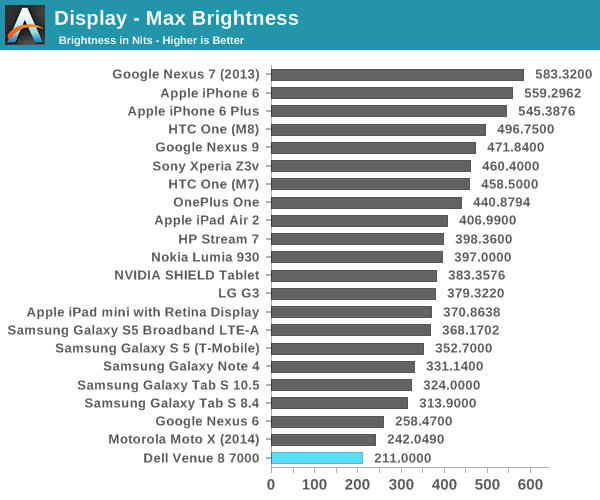
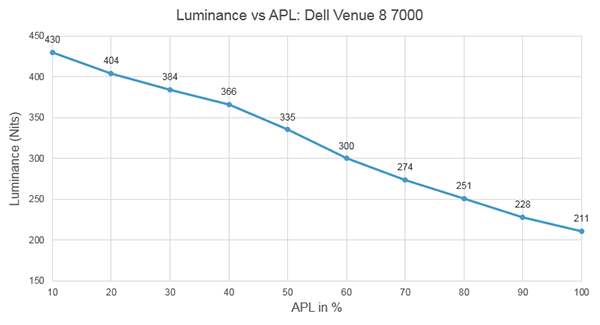
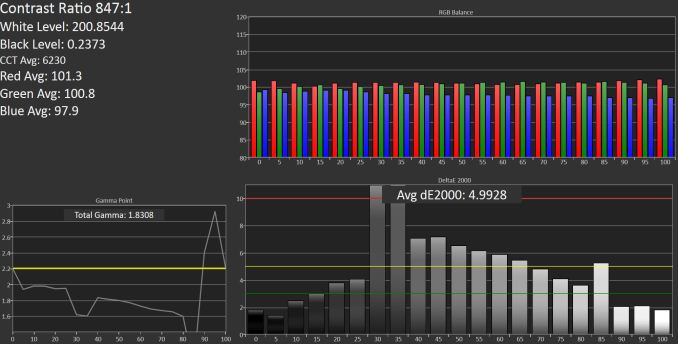
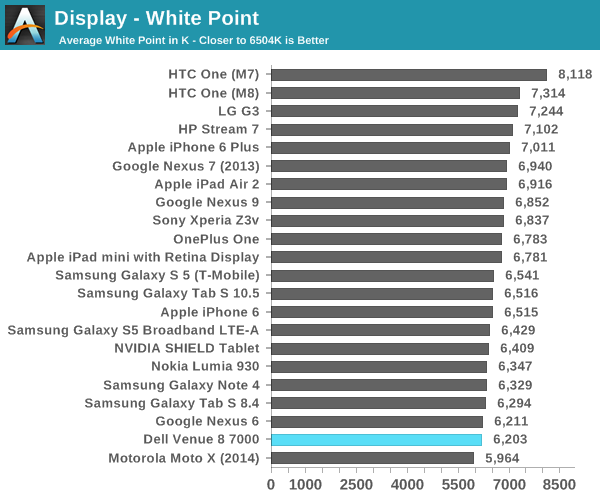

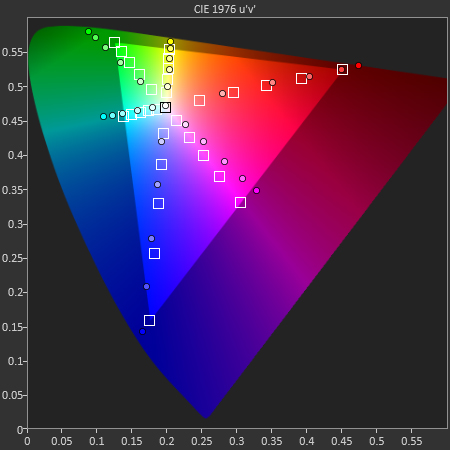
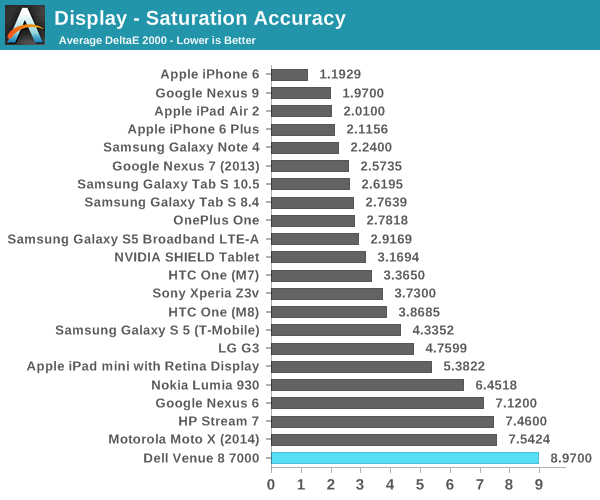

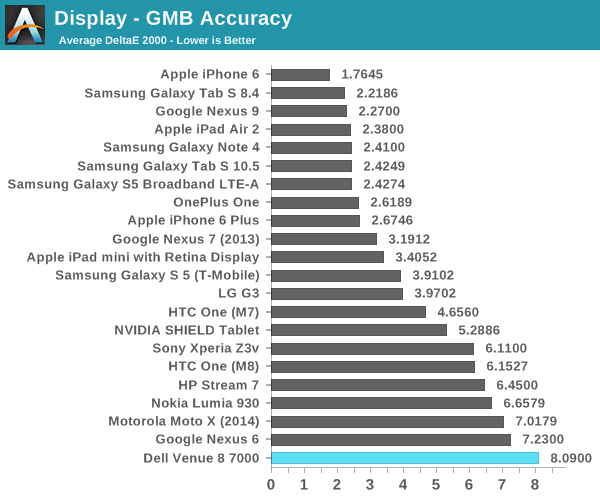








89 Comments
View All Comments
Sushisamurai - Sunday, March 15, 2015 - link
Yeah, this was a really well done review. Thoroughly enjoyed it even tho I'm not a dell fan.tipoo - Thursday, March 12, 2015 - link
My primary interest in this is that it has the same chip as in the Zenfone 2, I wonder how much it will have to scale back for a smartphone form factor. Seems like that could be the next budget champ, since it should be closer to the Snapdragon 800 than the 400.hrrmph - Thursday, March 12, 2015 - link
I find it less disconcerting that Dell made a WiFi only version that is being mistaken for a flagship tablet than the fact that it remains difficult to figure out from AT reviews whether there is an LTE version of any given tablet.For a flagship tablet review, this should be prominent in the Connectivity section, if not in the Introduction. Flagship tablets have everything but the kitchen sink thrown in - and that is the way it should be.
There is nothing wrong with the manufacturer making a WiFi only version. It is just that doing so will automatically make that version of the tablet a mid-range tablet. Maybe, upper mid-range - at best, if we are being charitable and they nailed everything else down perfectly.
4G LTE and GPS radios are mandatory for a tablet to be considered a true fully equipped flagship because it represents the peak level of equipage possible. Those who need it know why they need it...
...and AT should make it easier for us to figure it out... instead of having to sort through a pile of chaff to figure out if we are even interested in the article at hand. As it is, these type of muddled articles border on being clickbait.
If it were not for a helpful reader's comment, I wouldn't even know that Dell has produced LTE versions in this class of device.
In addition to asking whether Dell is interested in providing full flagship value, I'm finding myself asking the same of AT.
Brandon Chester - Thursday, March 12, 2015 - link
I apologize for not listing it in the chart on the first page. However, it was mentioned in the WiFi section. I've added it to the connectivity cell in the spec chart to make it easily accessible.FlyBri - Thursday, March 12, 2015 - link
@hrrmph -- I'm sorry, but you are sorely mistaken with your comment about a flagship tablet absolutely having to have a 4G LTE radio. Adding in a cell radio usually increases the cost of the tablet much more, and you can have the exact same tablet without it, and it's still considered flagship. So what are you saying is that an iPad Air 2 with a cell radio is a flagship device whereas the same iPad Air 2 without is not? That's just ridiculous. any iPad Air 2 is a flagship device -- period. Many tablets are used just as a media consumption device at home with WiFi. And as someone mentioned earlier, you can also many times use your phone as a hotspot to get cell coverage for the tablet.As a tablet doesn't have to have a cell radio, it can still be a flagship device. So you can have a flagship tablet with and without a cell radio -- it's as simple as that.
metayoshi - Thursday, March 12, 2015 - link
By the way and off topic, nice Google+ avatar Brandon. One of the best Anime in recent times.Back to the review... Great review. I was also someone really wanting Dell to succeed on this one since I'm still on the lookout for a Windows tablet and Dell seems to have a bunch in the pipeline. Kind of disappointed at this device, but also somewhat expected considering they're not really the first choice when it comes to Android tablets.
Dell recently updated their Venue 11 Pro tablet line with the Core M 5Y71, and that, along the Asus Transformer Book T300 Chi, which is not out yet, is on my radar for a future purchase. If you guys could get reviews on those devices, that would be really nice. Of course, the best thing to do right now is probably wait until the Surface Pro 4 comes out, but I'd like to see some comparisons with other tablets/hybrid models before I make a purchase decision.
GeekBrains - Thursday, March 12, 2015 - link
Since the DELL Venue 8 is now having the option to update to Lollipop, why wasn't it updated before running all the benchmarks?http://www.hardwarezone.com.sg/feature-hands-dell-...
Brandon Chester - Friday, March 13, 2015 - link
The update wasn't available at the time I was doing my testing. I had to send the Venue 8 back to Dell.LukaP - Friday, March 13, 2015 - link
Perhaps noting in the review that the Lollipop version is now available, instead of saying it may take a while would be good.Brandon Chester - Friday, March 13, 2015 - link
I'm actually still looking into this because that hardwarezone source is the only site saying there's now a Lollipop update out, and yet their photos are of a tethered unit running KitKat. Once I hear back from Dell I'll update the article.